NASA Technology Transfer Teams
Winter 2018 Teams

Wireless Flight Sensor System
2018
Team Members:
Harjot Singh, Mitzi Montes
Current flight instrumentation systems are not able to incorporate wireless technology because Commercial-of-the-Shelf (COTS) wireless sensor technology isn’t designed to meet the need of flight systems (e.g. spectrum compliance and time synchronization). Additionally, COTS wireless sensor hardware is designed around specific protocols and frequency bands. To address these shortcomings, NASA Armstrong Flight Research Center, is working to design and develop a wireless flight sensor system that is platform and implementation agnostic and provides a layer of abstraction between wireless sensor technology and the systems it interfaces with. The new system will comply with spectrum management regulations without modifying hardware and will incorporate a wide variety of current and future wireless systems.

FOARS (Fiber Optics Augmented Reality System)
Winter 2018
Team Members:
Kabir Sethi, Panik Moradian
The Fiber Optic Sensing System (FOSS) technology developed at NASA's Armstrong Flight Research Center (AFRC) represents a major breakthrough in high-speed operational monitoring and sensing technology. Driven by ultra-efficient algorithms, FOSS can be used to determine in real-time a variety of critical parameters, including strain, shape deformation, temperature, liquid level, strength, and operational loads. Presently, a surface containing the fiber optic sensors and its associated data are studied at two separate locations creating a visual disassociation. AFRC has developed a system to overlay the data on top of the actual object to significantly improve visualization and understanding using 3D augmented reality technologies. As contraction and expansion occurs on various materials, a 3D augmented reality model is updated with pre-determined mapped colors allowing the tester to visualize various parameters such as strain in real-time.

Real-Time Six Degree of Freedom Shape Sensing Algorithm from Measured Strain
Winter 2018
Team Members:
Eddie Bader, Jeff Schmitendorf
The innovation is a strain based 3-D shape sensing and orientation sensing algorithm. The algorithm provides a convenient method to calculate the distributed deformed orientation angles (roll, pitch and yaw) and to calculate the distributed deformed shape of an object in three dimensional space (X, Y, Z) from distributed strain measurements. The algorithm keeps track of rotations in quaternion notation. Quaternion notation and quaternion math operations are quicker to compute than rotation matrices, which are commonly used in 3D shape sensing.
Winter 2017 Teams
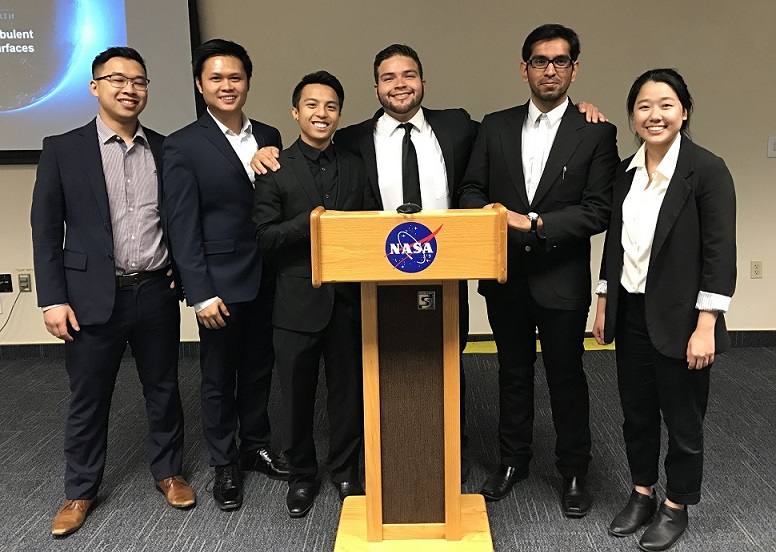
Highly Elastic Strain Gage for Low Modulus Materials
Winter 2017
Team Members:
Ashish Hingle, Su Yeon
New structural components on aerospace vehicles include highly elastic low Youngs modulus materials. These materials include Kevlar reinforced rubber and elastomers that inherently have a non-linear stress-strain relationship with extreme rupture strains, some greater than 500%. Current conventional foil strain gage technology is limited to 20% strains and inherently locally stiffens low modulus materials thus reducing strain transfer to sensor. With modification to a commercial medical sensor a highly elastic low modulus structural strain gage was developed and evaluated. Results from 16 sensors indicate potential use for elastic strain greater than 100%, with minimal localized stiffening. These initial tests indicate, when used with specifically designed constant current signal conditioning, accurate static strain measurements are achievable for ground test. In addition, a conceptual temperature-compensation method has been conceived to greatly reduce measurement error for future atmospheric flight applications in environments of minus 30F.
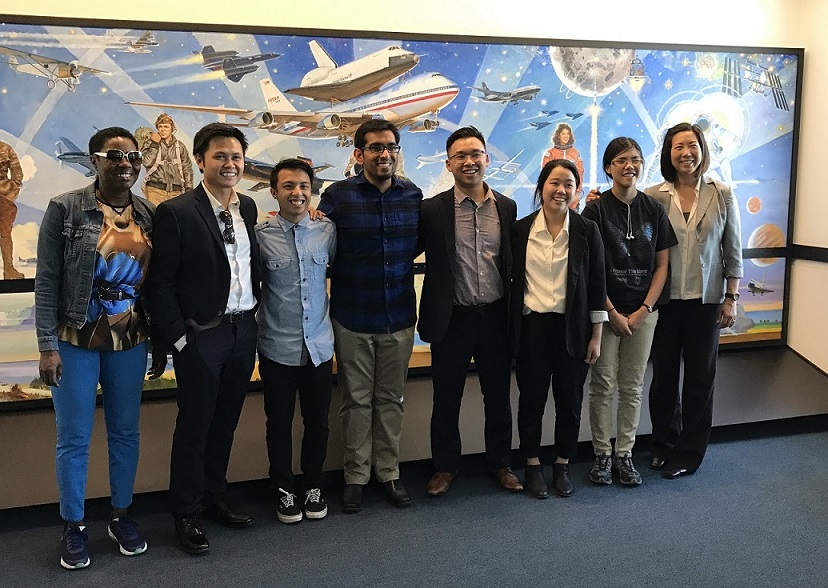
Methodology for Robust Active Flutter Suppression Controller Development
Winter 2017
Team Members:
Marion Barleta
Boundary layer cross flow is a dominant transition mechanism on swept wings at flight Reynolds numbers. Other transition mechanisms (such as attachment line transition, and Tollmein-Schlicting instabilities) can be managed by design, but managing cross-flow transition has been elusive. The only viable method, so far, has been using a method called "Distributed Roughness Elements" or DRE's. DRE's are very small roughness elements placed just downstream of the leading edge and attachment line. DRE's are designed to amplify a subcritical cross-flow wave as a means of attenuating what will become the dominant wave. This allows the flow to maintain a laminar boundary layer for a much longer chordwise extent than with the unmodified flow. Extending laminar flow can significantly reduce drag which consequently reduces fuel burn and increases range. While DRE's have been shown to work, so far the limitations have prevented their application on a full-scale aircraft. One limitation is that any particular DRE pattern is effective only for very limited conditions (i.e. point design). Thus to be more effective the DRE's would need to active in the sense that the elements would need to change to varying conditions. The current innovation has been shown to be able to produce a cross flow within the boundary layer.
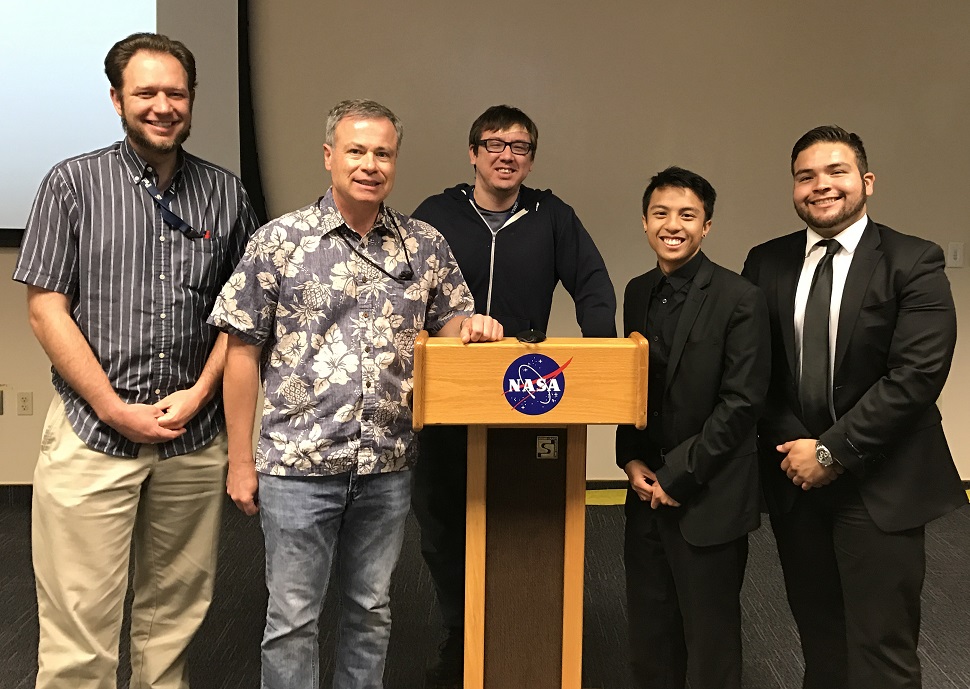
Methodology for Robust Active Flutter Suppression Controller Development
Winter 2017
Team Members:
Peter Hoang, Peter Nguyen
This is an overview of the control design methodology taken to fly the X-56A aircraft through unstable phugoid, body freedom flutter, traditional symmetric and antisymmetric flutter conditions.
Winter 2016 Teams
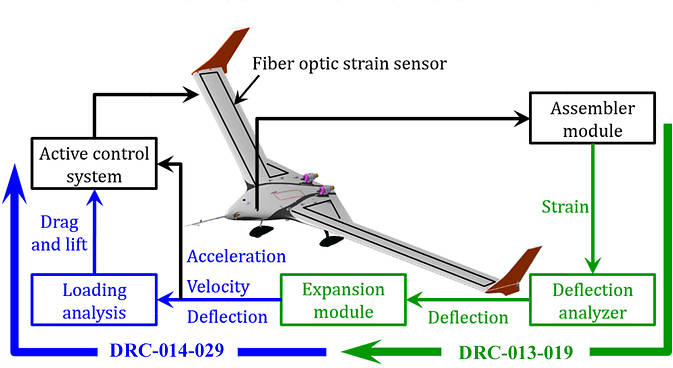
Computation of Wing Deflection and Slope from Measured Strain
Winter 2016
Team Members:
Samantha Chagoya & Nicholas Verity (Turbo-Electric Compressor/Generator Using Halbach Arrays)
Jennifer Nuñez & Lilly Ochoa (Computation of Wing Deflection and Slope from Measured Strain)
Rushi Shah and Ming Qiu 'Sherry Yu' (Improved Design for Propeller Based Devices)
Researchers at NASA’s Armstrong Flight Research Center have developed a revolutionary new method to compute wing deflection and slope from measured strain of an aircraft during flight. The technology is based on a lightweight, robust fiber optic system that is small, easy to install, and fast. It offers the first-ever means of obtaining real-time strain measurements while an aircraft is in flight. Such measurements are particularly useful for real-time virtual displays of wing motion; aircraft structural integrity monitoring; and actively reducing drag, controlling flexible motion, and alleviating loads.
Fall 2015 Teams
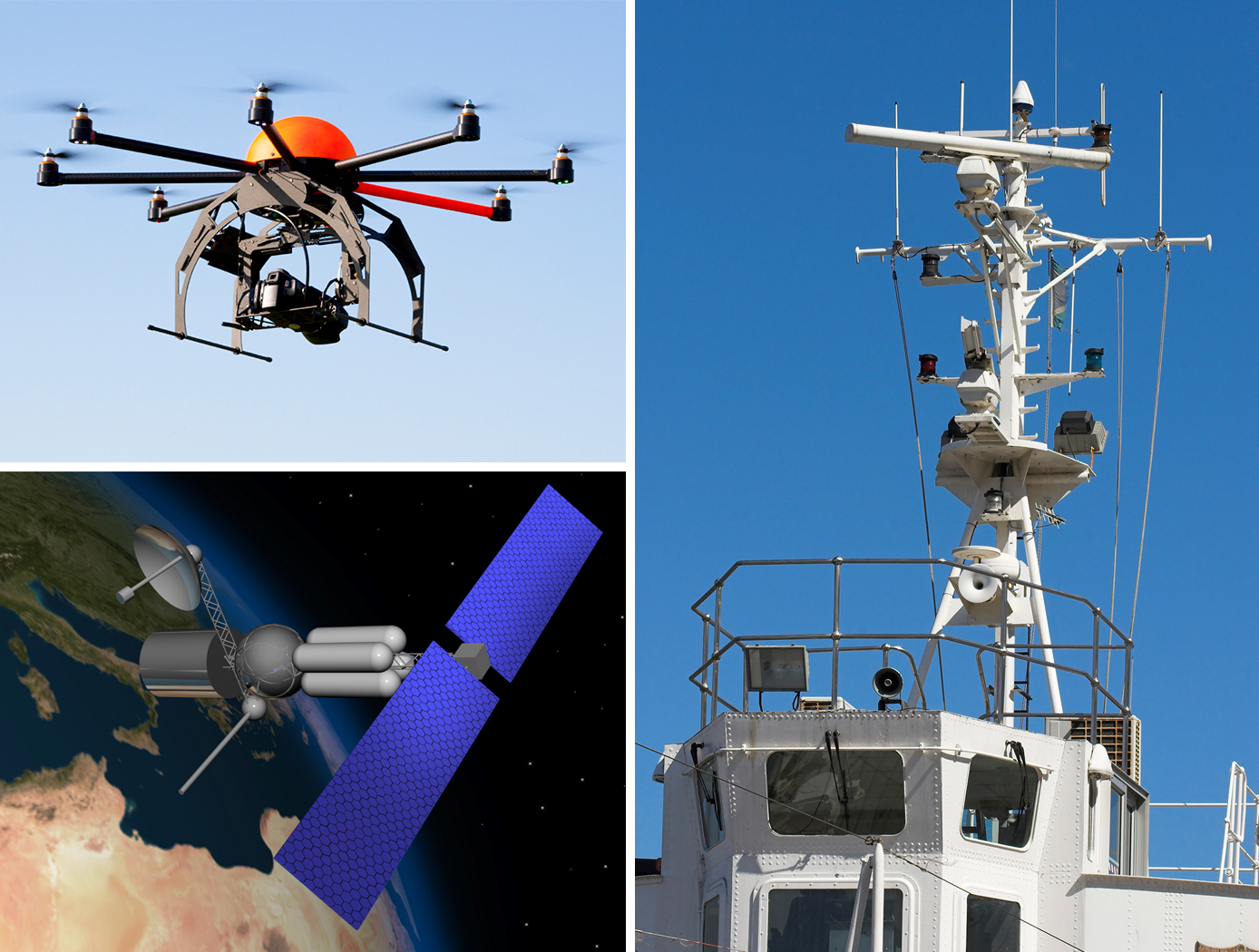
Low-Cost, Low-Power, Portable Mounting Platform for Auto-Tracking Antenna
Fall 2015
Team Members:
Farah Haddad & Matthew Cui (Auto-Tracking Antenna Platform)
Annie Chuong & Juso Ahmetspahic (Background Oriented Schlieren using Celestial Objects)
Diana Torres & Aladdin Tamimi (System and Method for Dynamic Aeroelastic Control)
Researchers at NASA’s Armstrong Flight Research Center have designed an innovative antenna-mounting platform that addresses an unmet need in the unmanned aerial vehicle (UAV) market by integrating multiple capabilities onto one low-cost platform. Capable of aiming four or more interchangeable antennas of any type, this unique continuously rotating platform is portable and can position and hold nearly 60 pounds of antennas and radios at its full rated speed, limited in number only by the size of the mounting bar installed on the platform. It is ideal for use with any moving system needing to transmit large quantities of data over one or more RF links. Possibilities include maintaining data links with UAVs and other aircraft used for academic and government research as well as communicating with marine ships in line of sight and in tracking satellites in non-geosynchronous (i.e. low-Earth) orbit. In fact, it could be used to track any line-of-sight object carrying multiple radio frequency (RF) sources which require directional antennas at one end of the link.
This technology was winner of an Outstanding Technology Development Award from the Far West Region of the Federal Laboratory Consortium for Technology Transfer.
Winter 2015 Teams
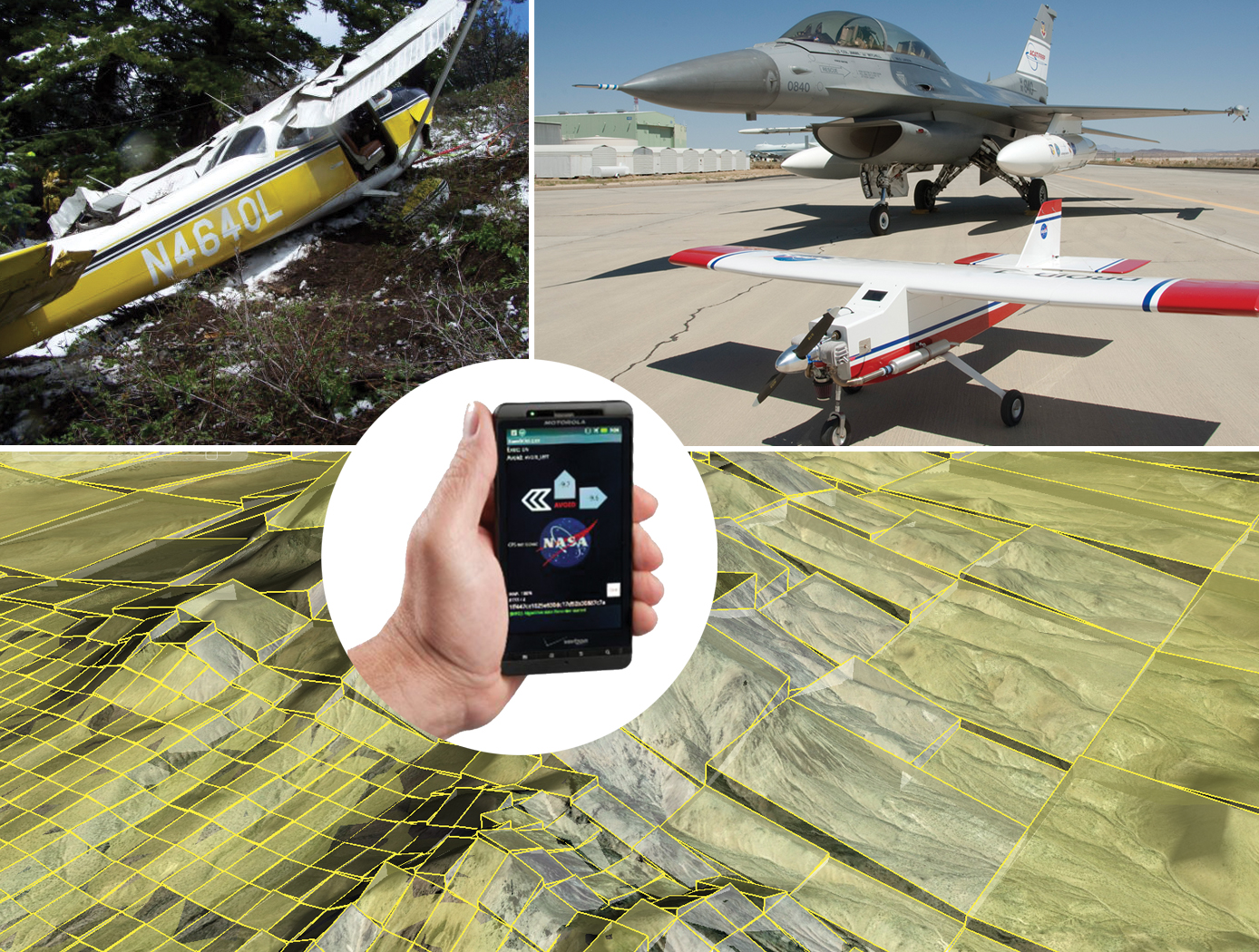
Improved Ground Collision Avoidance System
Winter 2015
Team Members:
Kevin Bucher & Sara Uffer (Systems and Methods for Peak-Seeking Control)
Filippo Busalacchi & Alex Rhodes (Method for Real-Time Structure Sensing)
Patrick Hogan & Jennifer Jurado (A Novel Approach to Liquid Level Sensing Using Fiber Bragg Grating Technology)
Chris Holyfield & Julian Lugo (Improved Ground Collision Avoidance System and Method)
Researchers at NASA's Armstrong Flight Research Center have dramatically improved upon existing ground collision avoidance technology for aircraft. NASA's system leverages leading-edge fighter safety technology, adapting it to civil aviation use as an advanced warning system. It offers higher fidelity terrain mapping, enhanced vehicle performance modeling, multidirectional avoidance techniques, more efficient data-handling methods, and user-friendly warning systems. The algorithms have been incorporated into an app for tablet/handheld mobile devices that can be used by pilots in the cockpit, enabling significantly safer general aviation. This will enable pilots to have access to this lifesaving safety tool regardless of what type of aircraft they are flying. The system also can be incorporated into electronic flight bags (EFBs) and/or aircraft avionics systems.
Fall 2014 Teams
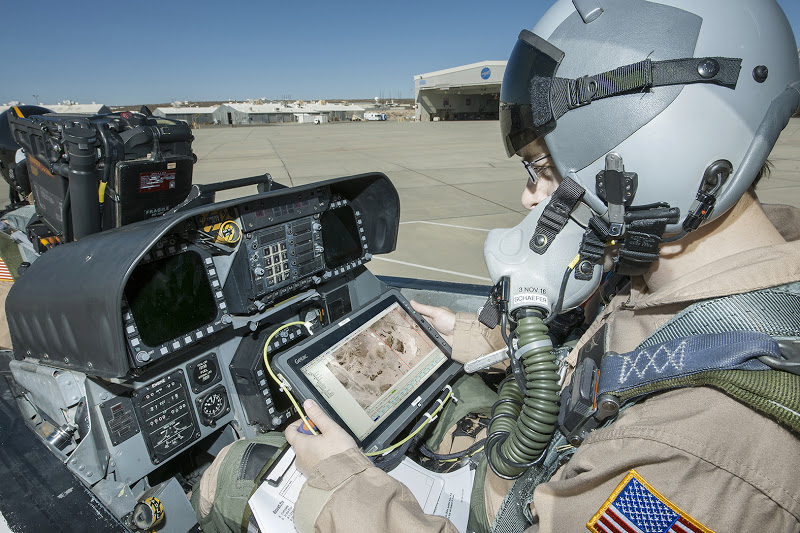
Improved, Real-time, Interactive Sonic Boom Display
Fall 2014
Team Members:
Gal Bechor & Keith Brace (Method and apparatus of multiplexing and acquiring data from multiple optical fibers using a single data channel of an optical frequency-domain reflectrometry (OFDR) system)
Patricia Cruz & Elizabeth Romo (Improved, Real-time, Interactive Sonic Boom Display)
Cynthia Solis and Brian Ramirez (NASA DFRC Core Simulation)
A series of flights, recently flown at NASA’s Armstrong Flight Research Center in Edwards, California, featured a display that allowed NASA research pilots the ability to physically see their sonic footprint on a map as the boom occurred. The series, which marked the second phase of the Cockpit Interactive Sonic Boom Display Avionics project, or CISBoomDA, continued from the project’s first phase, where only a flight test engineer could see the display.
With the ability to observe the location of their aircraft’s sonic booms, pilots can better keep the loud percussive sounds from disturbing communities on the ground. NASA’s supersonic research projects are helping engineers develop the means to design and build a proposed Low Boom Flight Demonstrator experimental aircraft, or X-plane, as part of the agency’s New Aviation Horizons initiative. The X-plane would be designed to demonstrate what NASA believes could be a quieter thump in place of the louder sonic boom. This could, in the future, introduce the opportunity to permit supersonic flight over land.
The display will ultimately be used to help NASA proceed with supersonic research in a way that minimizes disturbance on the ground and provides practice with the future of supersonic technology for pilots such as NASA research pilot Nils Larson.